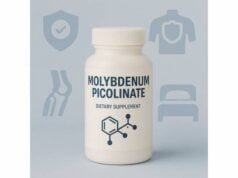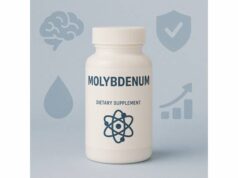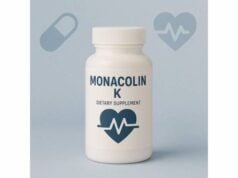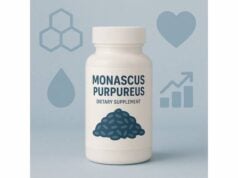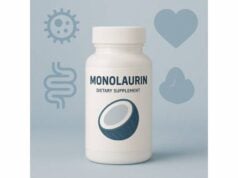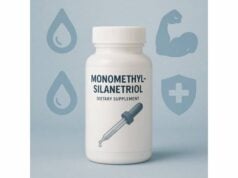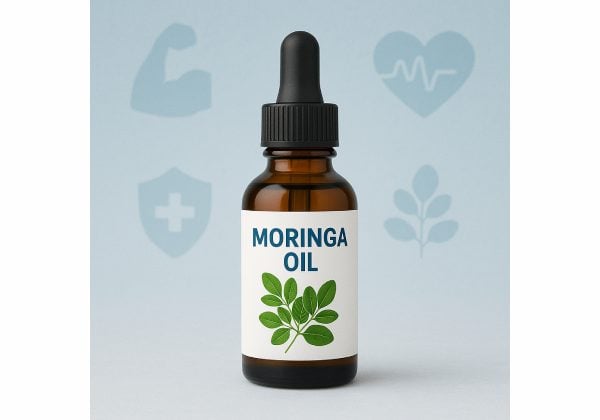
Moringa oil—often called “ben oil”—is a nutrient-dense oil pressed from the seeds of Moringa oleifera. It is prized for a high content of oleic acid (a skin-friendly monounsaturated fat), natural antioxidants like tocopherols, and plant sterols that help the skin feel supple and calm. In skincare, moringa oil acts as an emollient and an occlusive, softening skin while slowing moisture loss. In hair and scalp care, it reduces dryness and helps tame frizz without heaviness. As a culinary oil, it is stable in storage and suitable for everyday cooking due to its favorable fatty acid profile and oxidative resilience. Research on topical use has grown, with small human studies showing improvements in skin hydration and visible redness. At the same time, evidence for internal “supplement-like” effects is far more limited. This guide explains what moringa oil is, how it works, what benefits to expect, how to use it safely on skin and hair, and where the science is strong—or still emerging.
Essential Insights
- Supports skin hydration and reduces visible redness; absorbs without a greasy finish.
- Perform a 24-hour patch test; discontinue if burning, itching, or hives occur.
- Typical topical use: 2–5 drops for the face, or 1–3% in leave-on formulas; 5–20% in wash-off products.
- Avoid or seek medical guidance if you have a seed allergy, are pregnant or breastfeeding, or take medications with narrow safety windows.
Table of Contents
- What is moringa oil?
- Science-backed benefits
- How to use moringa oil
- How much moringa oil per day?
- Safety risks and who should avoid
- Research summary and what remains unclear
What is moringa oil?
Moringa oil is a plant oil expressed from the seeds of Moringa oleifera, a resilient tree cultivated across Africa, Asia, and Latin America. Traditional texts and regional cuisines reference the oil for culinary, cosmetic, and lamp-lighting uses. The term “ben oil” comes from the relatively high proportion of behenic acid (a long-chain saturated fatty acid) alongside dominant oleic acid. This combination matters: oleic acid lends fluidity and quick spread on the skin, while small amounts of behenic and other saturated fats add slip and a satin finish.
Chemically, moringa oil is a high-oleic oil—similar in broad outline to extra-virgin olive oil—with typically 65–78% oleic acid. It also contains palmitic, stearic, arachidic, and behenic acids in smaller proportions, plus minor but meaningful levels of natural antioxidants (tocopherols) and phytosterols (such as campesterol and stigmasterol). These compounds contribute to oxidative stability in the bottle and to cosmetic performance on the skin. In practice, the oil resists rancidity better than many polyunsaturated seed oils, stores well at room temperature when protected from light, and stays fluid in cooler climates.
Extraction and processing influence quality. Cold pressing preserves antioxidants and aroma, while solvent extraction may yield slightly higher output at the expense of micronutrient retention. Refining steps (neutralization, degumming, bleaching) can improve clarity and shelf stability but may reduce some natural pigments and tocopherols. For leave-on skincare, minimally processed, cold-pressed oil is often preferred because it keeps more of the native antioxidants and subtle nutty scent. For culinary use, refined versions are more neutral in flavor and color and can be appropriate when a lighter-tasting oil is desired.
Compared with popular cosmetic oils like argan or squalane, moringa oil sits in the middle for weight and absorption. It spreads more readily than heavier oils (e.g., castor) and feels slightly richer than ultra-light esters. This “balanced” sensory profile lets it moisturize without leaving a conspicuous film. On hair, the same balance helps seal cuticles and tame flyaways without collapsing volume.
In short, moringa oil is an emollient, antioxidant-rich, high-oleic oil with good stability and a versatile texture. Those qualities explain why formulators use it in serums, creams, balms, body butters, cleansing oils, conditioners, and scalp treatments—and why home users can comfortably apply it neat in a simple routine.
Science-backed benefits
Improves skin hydration and comfort. Small human studies using moringa seed oil in cream form have shown significant increases in skin hydration over several weeks of daily use compared with a cream base alone. Mechanistically, moringa oil helps in two complementary ways. First, as an emollient, it fills spaces between corneocytes (dead cells in the outermost layer of skin), leaving the stratum corneum smoother and softer. Second, as a mild occlusive, it slows transepidermal water loss (TEWL), helping skin retain moisture between applications. These effects are most noticeable in dry, tight, or wind-chapped skin, and they can support a strong barrier through seasonal changes.
Reduces visible redness. In the same human data set, participants using moringa-oil cream saw reductions in erythema (a measure linked to redness). While the study was short and not a drug trial, the finding aligns with the oil’s content of tocopherols and plant sterols, which can modulate oxidative stress and support barrier recovery after environmental exposure.
Antioxidant support. Moringa oil contains alpha-tocopherol and related compounds that neutralize free radicals in vitro. In real-world use, this translates into a supportive role: it helps shield skin lipids from oxidative stress (e.g., urban pollution or sun exposure in daily life), especially when combined with sunscreen and a robust routine. Antioxidant activity may also contribute to the oil’s relatively slow oxidation during storage, protecting sensory quality and reducing rancid odors.
Balanced feel for acne-prone or sensitive skin. While there is no definitive clinical trial showing moringa oil treats acne, many people tolerate high-oleic oils well in small quantities, and the oil’s quick spread allows low-dose use without a heavy film. For those who break out easily, using 2–3 drops over a damp face (or mixing into a ceramide-rich moisturizer) can soften skin while minimizing the risk of congestion. Patch testing remains essential.
Hair and scalp benefits. Moringa oil helps “smooth and seal” hair cuticles. Used pre-shampoo, it reduces friction during washing; used on damp lengths, it helps control frizz and adds shine. On the scalp, a few drops massaged into dry or flaky areas can soften scale and reduce tightness. Oleic acid improves spread and penetration into the upper layers of the scalp’s stratum corneum, while minor saturated fats help lock in moisture.
Culinary stability and neutral taste. As a high-oleic oil with comparatively low polyunsaturated content, moringa oil stands up well to everyday sautéing and baking. Its neutral-to-nutty flavor fits salads, dips, and light cooking where you want a mild profile. While food chemistry studies show good oxidative stability during storage, keep in mind that health claims beyond basic culinary use are not yet supported by large human trials.
Where moringa oil shines most. Based on current evidence, the strongest case is topical: improving hydration and visible redness in otherwise healthy, dry, or sensitive skin; adding shine and smoothness to hair; and acting as a stable, skin-friendly carrier in formulations that include actives like niacinamide or ceramides. Oral or “supplement-style” claims remain preliminary.
How to use moringa oil
For face (simple routine):
- Cleanse gently. Pat the face until slightly damp; do not fully dry—surface water helps the oil spread and reduces the amount you need.
- Apply a water-based serum if you use one (e.g., hyaluronic acid, niacinamide).
- Warm 2–3 drops of moringa oil between your fingertips and press over the face and neck. Focus on dry zones (cheeks, around the nose).
- If skin is very dry, seal with a pea-size amount of a ceramide cream. In humid climates, skip the extra cream.
- Morning routine: use moringa oil after antioxidants and before—or mixed with—a moisturizer, then apply sunscreen as the final step.
For body:
- After showering, apply 6–10 drops per limb while skin is still slightly damp.
- For rough areas (elbows, knees), massage a few extra drops until fully absorbed.
- For a quick “body butter”: blend a teaspoon of moringa oil into a palmful of your usual lotion right before application.
For hair:
- Pre-shampoo treatment: Work 5–10 drops through mid-lengths to ends; leave 15–30 minutes; shampoo as usual.
- Leave-in on damp hair: Rub 1–3 drops between palms and smooth over frizz-prone sections.
- Scalp care: Part hair and massage 2–3 drops into dry, tight, or flaky spots; leave overnight, then wash.
In formulations (DIY or professional):
- Leave-on products (serums, creams, balms): 1–3% is a practical starting range that enhances slip without heaviness.
- Wash-off products (cleansers, scrubs, masks): 5–20% adds emollience and “cushion” during use.
- As a carrier oil: Blend essential oils at 0.5–2% total, depending on the essential oil’s safety profile. Always check dermal limits for each essential oil and err on the low side.
Choosing quality:
- Look for cold-pressed, unrefined moringa seed oil for skincare. Expect a pale yellow color and a light nutty aroma.
- Packaging should be amber or opaque with a tight cap or dropper to limit light and air exposure.
- Ask for lot-specific data from the brand when possible (acid value, peroxide value, tocopherol content).
- Store cool and dark. A refrigerator is optional; a cupboard away from the stove is sufficient.
Pairing tips:
- Pairs well with humectants (glycerin, hyaluronic acid) and barrier supporters (ceramides, cholesterol).
- Use before richer creams if you want more slip; after gel serums to “lock” hydration.
- If using retinoids or exfoliating acids, apply moringa oil after these actives to mitigate dryness.
Signs you are using too much:
- Persistent sheen and pilling under sunscreen or makeup.
- Congestion in oil-prone areas.
- Greasy feel in hair lengths that does not rinse out with a single shampoo.
Reduce volume per application or limit to evening use on target areas.
How much moringa oil per day?
Topical use (face): Most people get excellent results with 2–5 drops once or twice daily, pressed onto damp skin. Start at the low end if your skin is combination or acne-prone. For a measurable approach, this equates to roughly 0.05–0.10 mL per application depending on your dropper.
Topical use (body): Use 6–10 drops per limb after bathing; adjust by season. In winter, layering a lotion first and sealing with 6–12 drops of oil helps reduce moisture loss.
Hair:
- Pre-shampoo: 5–10 drops distributed from mid-lengths to ends.
- Leave-in: 1–3 drops on damp hair for frizz control.
- Scalp massage: 2–3 drops on specific dry areas.
Formulation ranges (for DIY and professionals):
- Leave-on creams and serums: 1–3% moringa oil in the total formula.
- Balms and butters: 5–10% within an anhydrous base (e.g., shea, candelilla).
- Cleansing oils and balms: 10–50%, balanced with lighter esters and emulsifiers for rinse-off performance.
- Essential oil dilution: Keep total essential oils at 0.5–2%; moringa oil makes a stable carrier.
Culinary use: When substituting for everyday cooking oils, typical intake falls around 5–10 mL/day (about 1–2 teaspoons) from normal food preparation. There is no established clinical “dose” for moringa oil as a supplement. Treat it as a food oil rather than a therapeutic capsule, and avoid high single intakes if you are sensitive to fatty foods.
Timing: For skincare, apply whenever you cleanse—morning and/or evening. For hair, pre-shampoo treatments 1–2 times weekly are sufficient for most. For cooking, use as you would olive oil in sautéing, baking, or dressings.
When to increase or decrease:
- Increase gradually in cold, dry months; consider a cream as a base to reduce the amount of pure oil needed.
- Decrease in humid environments or if makeup longevity suffers.
- Spot-use only if you have combination skin—cheeks and around the mouth often benefit, while the T-zone does not.
Measuring without a scale: A standard dropper delivers 20–25 drops per mL. Two drops are roughly 0.08–0.10 mL, which is enough to cover a damp face.
Consistency beats quantity: You will see better results using small amounts daily over weeks than using large amounts sporadically.
Safety risks and who should avoid
General tolerance: Most people tolerate moringa seed oil on intact skin. In small human studies, creams containing moringa oil were well accepted without irritation over several weeks. Nonetheless, individual reactions vary.
Patch test first: Apply a pea-size amount (or 1–2 drops) to a discreet area of the inner forearm daily for 3 consecutive days. Watch for burning, itching, redness, or hives. If any occur, wash with a gentle cleanser and stop use.
Allergy considerations: Moringa comes from a seed; if you have a history of seed or tree-nut allergies, consult a clinician before using the oil. Cross-reactivity is not well characterized. Avoid applying on broken skin or open wounds unless directed by a clinician.
Interactions with actives:
- Retinoids, exfoliating acids: Moringa oil can buffer dryness, but if stinging occurs, separate application by 20–30 minutes or use on alternate days.
- Essential oils: Always dilute; avoid undiluted essential oils on the face.
- Prescription topicals: Ask your prescriber whether an oil layer might alter absorption.
Acne-prone skin: High-oleic oils are comfortable for many but not all acne-prone users. Use the smallest effective dose (2–3 drops) and avoid layering over heavy balms. If clogged pores increase after 2–4 weeks, discontinue or switch to a lighter emollient.
Pregnancy and breastfeeding: Data on moringa leaf and seed extracts are more available than on the oil itself, and topical safety data remain limited. Most cosmetic-grade plant oils are considered low risk on intact skin, but out of caution, discuss regular use—especially large-area applications—with your obstetric provider. For internal use during pregnancy or lactation, consult a clinician because robust human data are lacking.
Children and sensitive skin: Use sparingly and avoid fragranced blends. For eczema-prone skin, consider applying over a clinician-recommended moisturizer rather than directly on flares.
Ingestion and medications: When used as a cooking oil in normal amounts, moringa oil is comparable to other edible high-oleic oils. If you take medications with narrow therapeutic windows (e.g., anticoagulants), discuss dietary fat changes with your clinician to avoid unintended alterations in absorption or diet composition.
Storage safety: Keep tightly capped in a cool, dark place. Discard if the smell turns sharp or “paint-like,” which indicates oxidation. Do not heat the bottle directly on the stove or leave it in a hot car.
When to seek care: Stop use and seek medical advice for swelling of lips or eyes, widespread hives, wheezing, blistering, or any persistent reaction that lasts longer than 48–72 hours after discontinuation.
Research summary and what remains unclear
What we know with reasonable confidence:
- Composition: Moringa seed oil is high in oleic acid with smaller amounts of palmitic, stearic, arachidic, and behenic acids, plus tocopherols and phytosterols. This composition explains its stability and favorable sensory profile.
- Stability: Laboratory studies evaluating different extraction methods and storage conditions show moringa oil resists oxidation well compared with many seed oils. This supports its practical shelf life and usability in both culinary and cosmetic settings.
- Topical performance: In small, short-term human studies, creams containing moringa seed oil improve skin hydration and reduce visible redness compared with control bases. Subjects generally tolerate the products without irritation. These findings support positioning moringa oil as an emollient and barrier-supportive cosmetic ingredient.
Where evidence is limited or preliminary:
- Large randomized trials: We lack large, long-duration, placebo-controlled trials isolating moringa oil as the main active. Most studies are brief (weeks), combine the oil with standard cream bases, and focus on hydration and comfort rather than disease outcomes.
- Specific conditions (acne, eczema, psoriasis): While mechanistic arguments favor barrier support and comfort, clinical outcomes for diagnosed skin conditions remain under-studied. Any symptom relief should be considered supportive care, not treatment.
- Oral health claims: Beyond being a stable culinary fat, there is little human evidence that moringa oil, taken orally in defined doses, produces unique cardiometabolic or anti-inflammatory benefits beyond those expected from high-oleic dietary oils in general.
- Comedogenicity scales: Popular “comedogenic ratings” are not standardized across labs or skin types. Individual response varies; patch testing and gradual introduction are more reliable than relying on a single number.
- Optimal cosmetic percentage: Formulation ranges (e.g., 1–3% in leave-ons) are guided by sensory goals and stability rather than hard clinical endpoints. Titration to skin feel, environment, and product architecture remains best practice.
What would strengthen the case:
- Multi-center RCTs comparing moringa-oil formulas with inert controls over 8–12 weeks, measuring TEWL, erythema, patient-reported outcomes, and dermatologist grading.
- Head-to-head comparisons with other high-oleic oils to clarify whether moringa offers distinct advantages in hydration, redness, or sensory qualities.
- Expanded safety data in special populations (pregnancy, pediatrics, atopic dermatitis) under real-world use patterns.
For now, the practical takeaway is clear: moringa oil is a stable, skin-comforting emollient that integrates smoothly into routines and formulas. Use it where you want slip, softness, and a subtle occlusive effect—while keeping expectations realistic and safety first.
References
- Exploring the potential of Moringa oleifera Lam in skin disorders and cosmetics: nutritional analysis, phytochemistry, geographical distribution, ethnomedicinal uses, dermatological studies and cosmetic formulations 2024 (Review)
- Moringa oleifera Seed Oil Formulation Physical Stability and Chemical Constituents for Enhancing Skin Hydration and Antioxidant Activity 2020 (Human study)
- Oxidative properties of Moringa oleifera kernel oil from different extraction methods during storage 2020 (Comparative study)
- Moringa oleifera Seeds and Oil: Characteristics and Uses for Human Health 2016 (Review)
Disclaimer
This article is for educational purposes and does not provide medical advice. Moringa oil is a cosmetic and culinary ingredient, not a medicine. Always consult a qualified healthcare professional about any skin condition, allergies, pregnancy or breastfeeding, or before making changes to your skincare or diet—especially if you take prescription medications.
If you found this helpful, please consider sharing it on Facebook or X (formerly Twitter), or wherever you connect with others. Your support helps us continue creating clear, reliable guides. Thank you.

